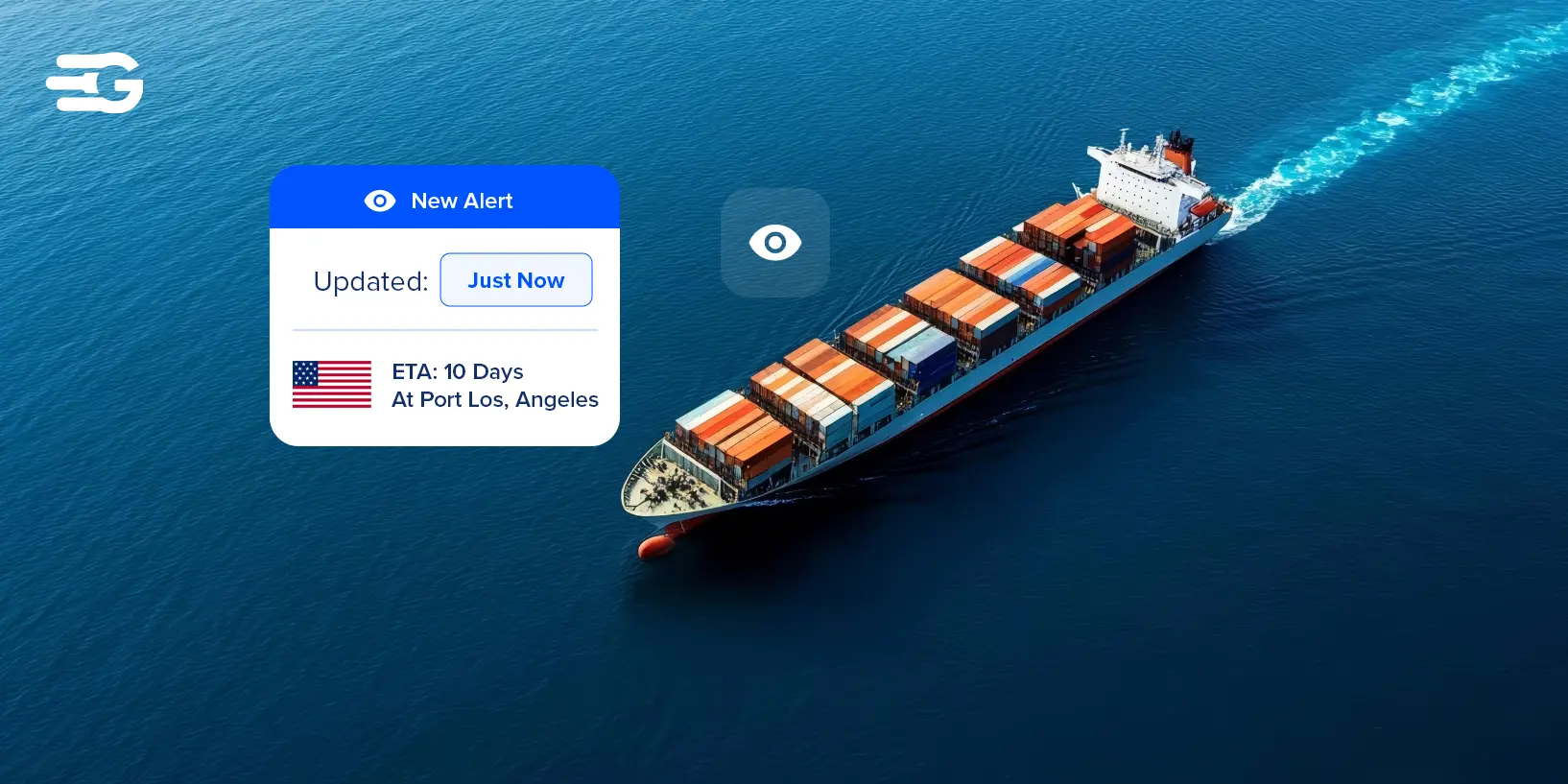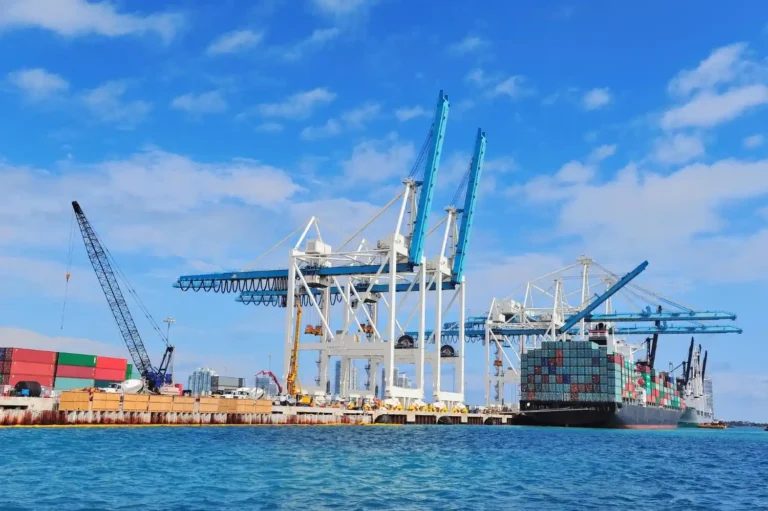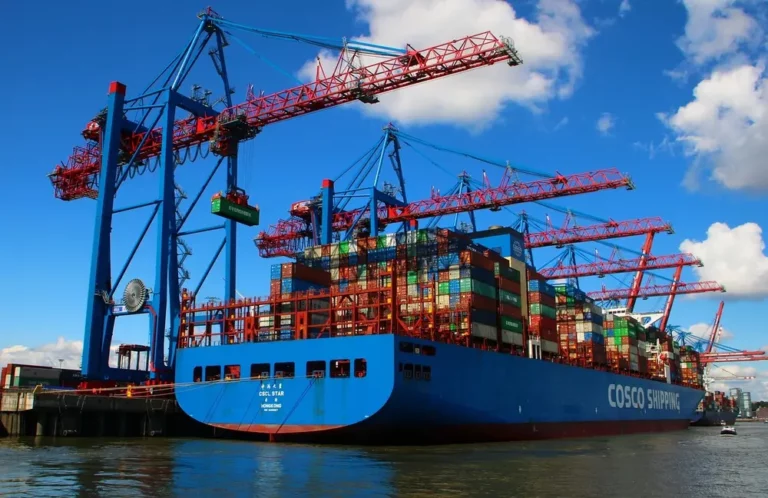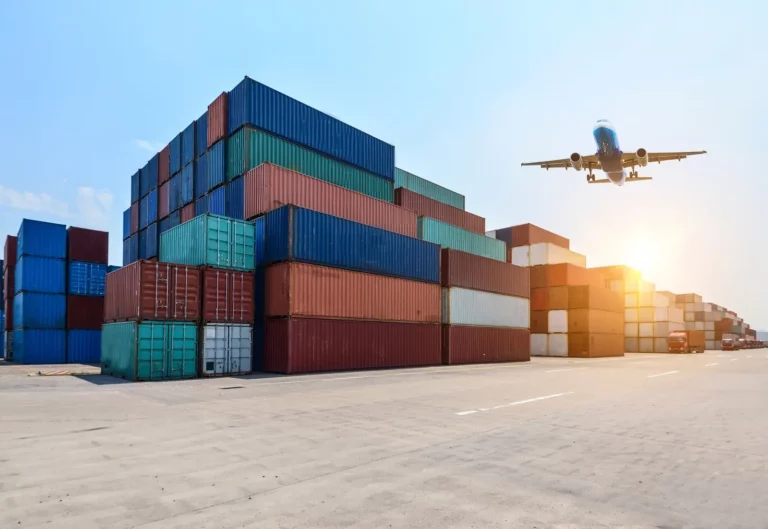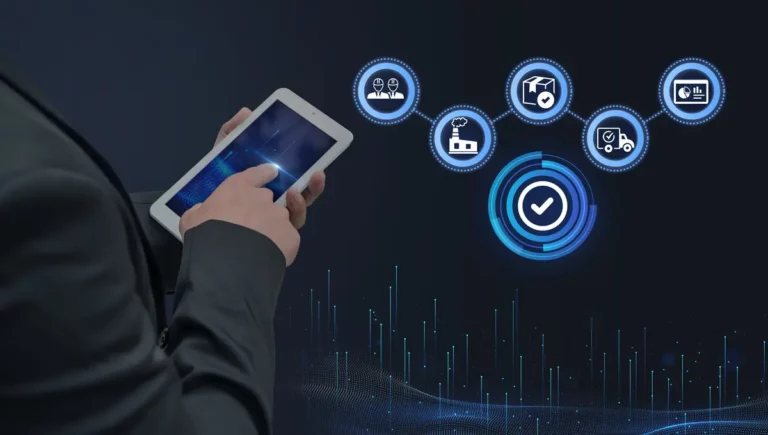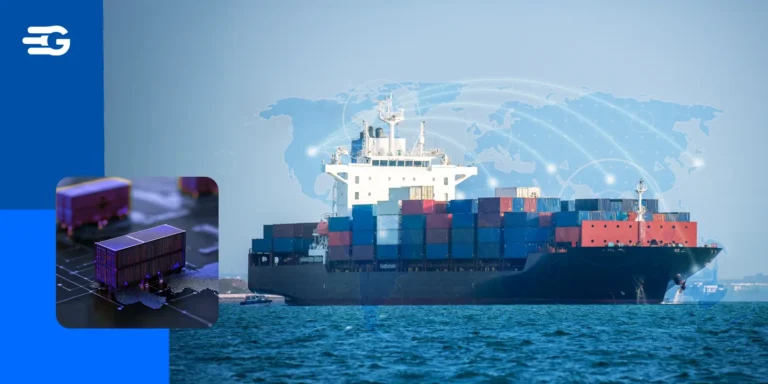Unlocking the Power of End-to-End Supply Chain Visibility
End-to-end supply chain visibility has become a critical capability for businesses seeking competitive advantage. It monitors the entire supply chain, from raw materials to final delivery.
This enables organizations to anticipate disruptions, optimize operations, and deliver exceptional customer experiences. As supply chains grow increasingly complex, implementing end-to-end visibility in supply chain systems has changed from a luxury to a necessity.
Understanding End-to-End Supply Chain Visibility
End-to-end visibility supply chain frameworks provide a unified view of all products, information, and financial flows across the entire supply network. This approach connects previously siloed data from sourcing, manufacturing, transportation, warehousing, and last-mile delivery into a single, accessible ecosystem.
With complete supply chain visibility, companies can track inventory in real time, monitor transportation status, identify potential disruptions before they occur, and make data-driven decisions that impact the entire value chain.
Modern supply chain visibility tools use advanced technologies including cloud computing, IoT sensors, mobile applications, and analytics platforms to create this panoramic view. These solutions enable organizations to move beyond reactive management toward proactive optimization and strategic planning.
Business Benefits of Complete Visibility
End-to-end supply chain visibility enhances efficiency, reduces costs, and improves vendor and customer relationships. Essentra, a global manufacturer, optimized its logistics by adopting GoTrack, GoInvoice, and GoShipment, eliminating manual tracking and invoice bottlenecks.
Driving Operational Efficiency
With real-time data, companies gain control over shipments, invoices, and vendor interactions. Essentra’s automation led to:
- Faster invoice approvals, improving cash flow.
- Smarter freight selection, reducing excess costs.
- Accurate shipment tracking, eliminating manual follow-ups.
- Lane-wise monitoring, preventing disruptions.
Reducing Delays and Optimizing Routes
Visibility helps identify inefficiencies early, preventing costly disruptions. Essentra’s use of GoTrack and GoProcure resulted in:
- 4.34% savings on freight spend.
- 6.75% fewer invoice discrepancies, preventing overpayments.
- 20+ hours saved in invoice reconciliation.
- Lower detention and demurrage fees with proactive tracking.
Enhancing Customer Satisfaction and Trust
Accurate data improves communication and trust. Essentra’s use of visibility tools enabled:
- Real-time order updates, reducing support inquiries.
- Faster vendor payments, increasing participation and better pricing.
- Better inventory planning, improving fulfillment rates.
How Visibility Transformed Logistics for Essentra
Before implementing supply chain visibility tools, Essentra struggled with delayed payments, shipment inefficiencies, and communication gaps. The lack of real-time tracking and centralized invoice management led to financial losses and poor vendor relations.
By integrating GoTrack, GoInvoice, and GoProcure, Essentra:
- Improved shipment tracking, reducing delays.
- Cut invoice reconciliation time by 20+ hours, improving efficiency.
- Achieved 4.34% freight savings, optimizing procurement.
- Reduced invoice errors by 6.75%, preventing financial discrepancies.
- Increased vendor participation, enhancing competition and pricing.
The Financial Impact of Supply Chain Transparency
Data-driven visibility leads to measurable results:
- 4.34% lower freight costs with optimized procurement.
- 6.75% fewer invoice errors, reducing financial loss.
- 20+ hours saved in admin tasks, freeing up resources.
- Stronger vendor relationships, leading to better rates.
Essentra’s success with our visibility solutions highlights the power of real-time supply chain insights. Reduced costs, increased efficiency, and improved partnerships drive long-term growth and competitive advantage.
Challenges in Achieving Full Visibility
Many organizations struggle to implement truly end-to-end visibility supply chain systems. Understanding these challenges is the first step toward overcoming them.
Common Obstacles and Their Solutions
The journey toward complete visibility frequently encounters several predictable roadblocks that organizations must navigate.
Data Silos and Integration Issues
The fragmented nature of supply chain data presents one of the most significant barriers to achieving true end-to-end supply chain visibility. Legacy systems, disconnected partners, and disparate data formats create information silos that prevent a unified view.
Modern visibility platforms address these challenges through:
- API-based integration capabilities
- EDI transformation tools
- Partner onboarding frameworks
- Data normalization systems
- Middleware connectivity solutions
Organizations that successfully overcome data integration challenges build a foundation for sustainable visibility that can evolve with changing business needs.
Lack of Real-Time Insights
Traditional supply chain systems often rely on batch processing and periodic updates, creating information lags that undermine the value of visibility. When decision-makers receive data hours or days after events occur, they can only react to problems rather than prevent them.
Leading companies are addressing this challenge by implementing supply chain visibility tools that deliver real-time insights through:
- IoT-enabled asset tracking
- GPS-based transportation monitoring
- RFID and barcode scanning at key touchpoints
- Automated milestone updates
- Event-based notifications and alerts
These capabilities transform visibility from a retrospective view into a proactive management tool.
Leveraging Technology for Smarter Visibility
The advancement of digital technologies has created new opportunities for enhancing end-to-end visibility in supply chain operations. Forward-thinking organizations are combining multiple technologies to create visibility systems.
AI and Machine Learning in Supply Chain Monitoring
Artificial intelligence and machine learning algorithms are transforming raw visibility data into actionable intelligence. These technologies enable:
- Predictive ETA calculations that continuously adjust based on current conditions
- Anomaly detection that identifies potential disruptions before they impact operations
- Pattern recognition that reveals optimization opportunities
- Automated decision support for complex routing and allocation challenges
- Natural language processing for extracting insights from unstructured data
As these technologies mature, they’re creating increasingly sophisticated visibility capabilities that extend beyond simple tracking to include prediction, prescription, and automation.
The Role of IoT and Blockchain
The Internet of Things (IoT) and blockchain technology are addressing two critical aspects of end-to-end supply chain visibility: data collection and data trust.
IoT sensors provide continuous, automated data collection from assets, inventory, equipment, and environments. These devices monitor location, temperature, humidity, shock, tilt, and other critical parameters without human intervention, dramatically increasing the granularity and reliability of visibility data.
Blockchain technology addresses the trust dimension by creating immutable, shared records of supply chain events and transactions. This capability is particularly valuable for:
- Product authentication and anti-counterfeiting
- Ethical sourcing verification
- Regulatory compliance documentation
- Transfer of ownership tracking
- Quality assurance certification
Together, these technologies are enabling unprecedented levels of transparency across complex, multi-tier supply networks.
Steps to Achieve True End-to-End Visibility
Implementing end-to-end supply chain visibility requires a structured approach that balances quick wins with long-term strategic objectives.
A Phased Approach to Implementation
Most successful visibility initiatives follow a measured implementation strategy that builds momentum through early successes.
Starting with Quick Wins
- Begin with highest-value transportation lanes or product categories
- Focus first on integrating internal systems before extending to external partners
- Identify and address the most critical visibility gaps based on business impact
- Implement dashboards for key stakeholders to demonstrate immediate value
- Target processes with significant manual tracking or reporting requirements
- Choose technology partners with pre-built integrations to your existing systems
This incremental approach builds confidence, demonstrates ROI, and creates organizational buy-in for more extensive visibility initiatives.
Scaling Visibility Solutions Across the Network
After establishing initial success, organizations can expand their end-to-end visibility supply chain capabilities by:
- Gradually incorporating additional transportation modes and carriers
- Extending visibility upstream to key suppliers and downstream to customers
- Adding more granular tracking capabilities (pallet-level to item-level)
- Implementing advanced analytics and predictive capabilities
- Automating exception management and resolution
- Expanding visibility across geographical regions and business units
This scaling process should be guided by a clear roadmap that aligns with overall supply chain strategy and business objectives.
Selecting the Right Visibility Platform
The technology foundation for end-to-end supply chain visibility plays a critical role in determining long-term success. Organizations should evaluate potential solutions based on both current requirements and future scalability.
Key Features to Look for in a Visibility Solution
The most effective supply chain visibility tools incorporate several essential capabilities:
- Multi-modal transportation visibility across all carriers and modes
- Real-time location tracking with dynamic ETA calculations
- Exception management with automated alerts and resolution workflows
- Advanced analytics with customizable dashboards and reports
- Open architecture with extensive API libraries
- Mobile accessibility for on-the-go decision-making
- Collaborative features for internal and external stakeholders
- Configurable business rules and workflow automation
- Scalable infrastructure that can grow with your organization
- Strong security and privacy controls
Organizations should prioritize these features based on their specific business requirements and existing technology landscape.
Comparing Top Supply Chain Software
| Solution | Transportation Visibility | Warehouse Visibility | Order Visibility | Supplier Visibility | Analytics Capabilities | Integration Flexibility | Implementation Complexity | |
| GoComet | ★★★★★ | ★★★★☆ | ★★★★★ | ★★★☆☆ | ★★★★☆ | ★★★★★ | Low | |
| FourKites | ★★★★☆ | ★★★★★ | ★★★☆☆ | ★★★★☆ | ★★★☆☆ | ★★★☆☆ | Medium | |
| Descartes MacroPoint | ★★★★★ | ★★★☆☆ | ★★★★☆ | ★★★★★ | ★★★★★ | ★★★★☆ | High | |
| Shippeo | ★★★☆☆ | ★★★★☆ | ★★★★★ | ★★★☆☆ | ★★★★★ | ★★★★☆ | Medium | |
| Project44 | ★★★★☆ | ★★★★★ | ★★★★☆ | ★★★★☆ | ★★★★☆ | ★★★★★ | Medium |
This comparison highlights the different strengths of leading visibility platforms, emphasizing the importance of aligning solution capabilities with your organization’s specific requirements.
Measuring and Optimizing Visibility Performance
Implementing end-to-end visibility in supply chain operations is not a one-time project but an ongoing journey of improvement. Establishing clear metrics and improvement processes ensures that visibility investments deliver sustainable value.
Key Performance Indicators (KPIs) for Success
Organizations should monitor several metrics to evaluate the effectiveness of their visibility initiatives:
- On-time delivery performance
- Order accuracy and completeness
- Average resolution time for exceptions
- Inventory accuracy across locations
- Dwell time at transportation nodes
- Perfect order percentage
- Transportation cost per unit
- Forecast accuracy improvement
- Customer satisfaction scores
- Labor productivity in logistics operations
These KPIs provide a quantitative foundation for measuring visibility ROI and identifying opportunities for further optimization.
Continuous Improvement Strategies
Leading companies establish formal processes for leveraging visibility data to drive ongoing performance improvements:
- Regular review of exception patterns to identify and address root causes
- Systematic analysis of carrier and supplier performance metrics
- Cross-functional teams tasked with addressing persistent visibility gaps
- Periodic benchmarking against industry standards and competitors
- Structured feedback loops between operational teams and technology partners
- Regular training and capability building for visibility system users
These processes transform visibility from a passive monitoring tool into an active driver of supply chain excellence.
The Future of Supply Chain Visibility
As technology continues to evolve, end-to-end supply chain visibility capabilities will expand in scope, depth, and intelligence. Organizations that stay ahead of these trends will gain significant competitive advantages.
Emerging Trends and Innovations
The next generation of supply chain visibility tools will incorporate several capabilities that extend beyond current functionalities.
Predictive Analytics and Autonomous Logistics
The combination of artificial intelligence, machine learning, and visibility data is enabling a shift from reactive to predictive supply chain management. Future systems will:
- Forecast disruptions days or weeks before they occur
- Autonomously reroute shipments to avoid predicted delays
- Self-optimize inventory placement based on demand patterns and risk factors
- Automatically adjust production schedules based on supply chain signals
- Enable touchless order fulfillment with minimal human intervention
These capabilities will dramatically reduce manual decision-making while improving overall supply chain resilience and performance.
The Shift Toward Sustainable and Resilient Supply Chains
End-to-end supply chain visibility will play a crucial role in addressing growing demands for sustainability and resilience. Advanced visibility solutions will enable:
- Real-time carbon footprint tracking across the entire supply network
- Supplier sustainability compliance monitoring and verification
- Circular economy enablement through reverse logistics optimization
- Water and energy usage tracking throughout production and distribution
- Ethical labor practice verification across multi-tier supply networks
- Resilience scoring based on network design and redundancy analysis
These capabilities will help organizations balance cost, service, sustainability, and risk considerations in an increasingly complex business environment.
The journey toward complete end-to-end supply chain visibility represents one of the most significant opportunities for operational transformation in modern business. Organizations that successfully implement visibility solutions gain unprecedented control over their supply networks, enabling them to deliver exceptional customer experiences while optimizing costs and mitigating risks.
As technology continues to evolve, the possibilities for visibility-driven innovation will expand, creating new opportunities for competitive differentiation and supply chain excellence.
